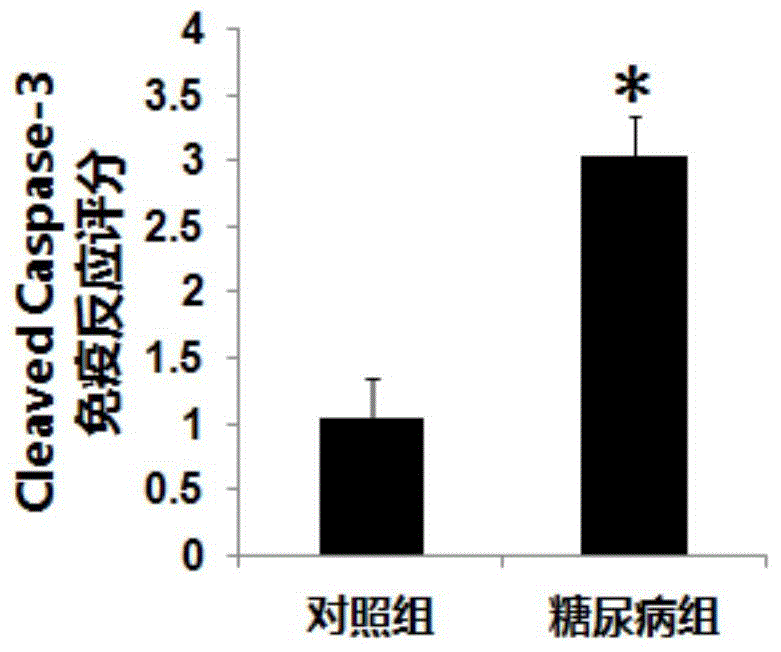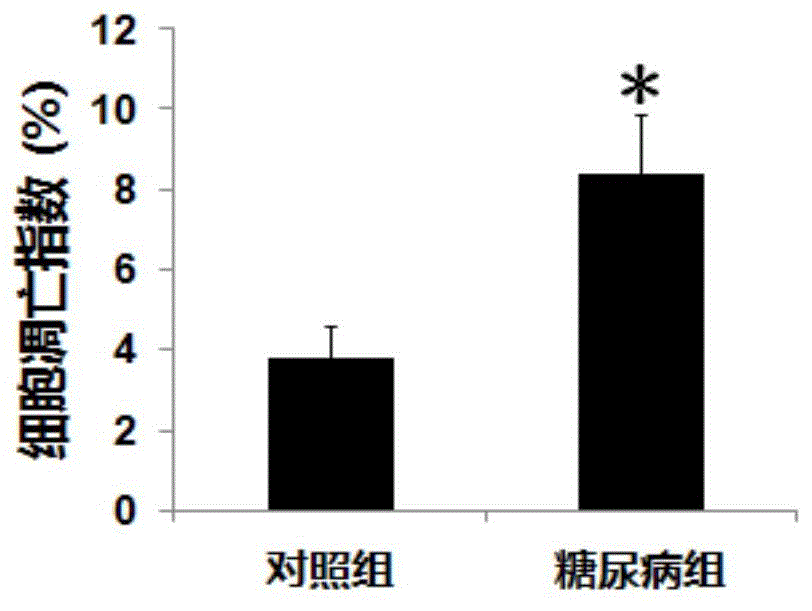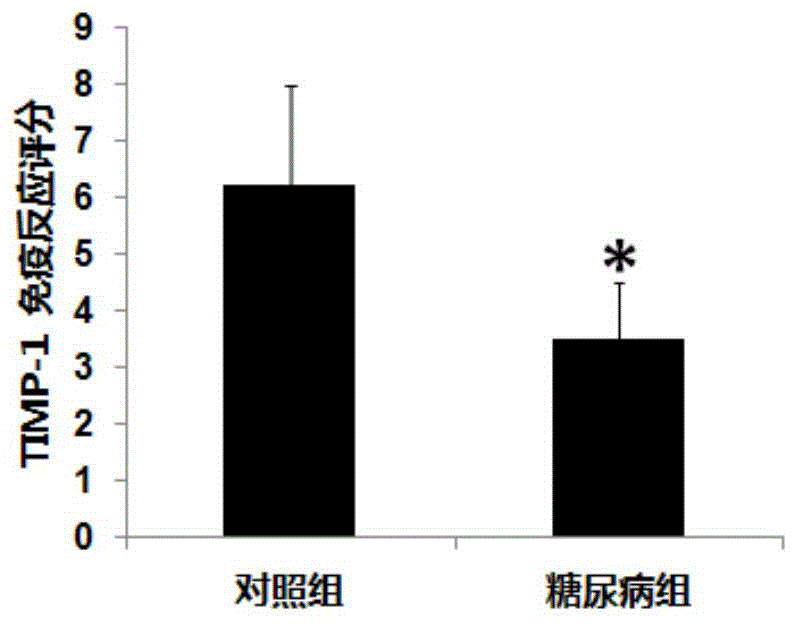Application of TIMP-1 (tissue inhibitor of metalloproteinase-1) gene in preparation of product for treating diabetic skin ulcers
A TIMP-1, 1.TIMP-1 technology, applied in the field of application of TIMP-1 gene in the preparation of skin wound products for the treatment of diabetes, to achieve the effect of accelerated healing
- Summary
- Abstract
- Description
- Claims
- Application Information
AI Technical Summary
Problems solved by technology
Method used
Image
Examples
Embodiment 1
[0053] Example 1 Detection of wound skin cell apoptosis and TIMP-1 expression in diabetic patients
[0054] Experimental objects and materials: skin samples
[0055] Diabetic foot group: from June 2011 to April 2013, 18 patients with type 2 diabetes hospitalized in our department due to diabetic foot, with an average age of 62±13.14 years; non-diabetic group: from June 2011 to April 2013 18 non-diabetic patients who were hospitalized for foot trauma in the orthopedics department of our hospital every month, with an average age of 55±15.45 years. The samples were obtained with the informed consent of the patients. All skin specimens were taken after local infection control, 0.5 cm from the edge of the foot wound. Cut the skin specimens and fix them with 4% paraformaldehyde solution to make paraffin sections with a thickness of 5 μm;
[0056] (1) Detection of apoptosis in wound skin cells of diabetic patients
[0057] ①Activated Caspase-3 (Cleaved Caspase-3) immunohistochemi...
Embodiment 2
[0070] Example 2 Effects of Glycosylation End Products (AGEs) on Human Skin Fibroblast Apoptosis and TIMP-1 Expression
[0071] (1) Cell source Surgical specimens after circumcision of normal children in the Department of Urology or Pediatric Surgery of our hospital were collected with the consent of the patient's family members. The experimental object is the 4th to 6th passage cells;
[0072] Human skin fibroblast culture: obtain human skin fibroblasts through primary culture, press 1×10 4 The density per well was inoculated into a 6-well plate, the cells grew to 60% confluence in the logarithmic growth phase, and the normal sugar medium with a volume fraction of 0.5% fetal bovine serum was replaced for 24 hours to make the cells enter a synchronized state; the cells were divided into 2 groups: one group is a normal control group (containing NG 5.6mmo / L, NG here refers to normal concentration of glucose, all groups of the following cell cultures contain NG, because NG is a ...
Embodiment 3
[0095] Example 3 Effect of exogenous rhTIMP-1 on AGEs-induced apoptosis of human skin fibroblasts
[0096] (1) Cell source: same as Example 2;
[0097] (2) Cell apoptosis detection by flow cytometry:
[0098] Human skin fibroblast culture: obtain human skin fibroblasts through primary culture, press 1×10 4 Inoculate into 6-well plate at the density of / well; the cells grow to 60% confluence in the logarithmic growth phase, replace the normal sugar medium with a volume fraction of 0.5% fetal bovine serum and starve for 24h, so that the cells enter a synchronized state; the cells are divided into 3 groups: normal control group, AGEs group and AGEs+rhTIMP-1 group, the culture medium of the above-mentioned different treatments was replaced according to the experimental groups, wherein, the culture medium of the normal control group contained NG 5.6mmo / L; the culture medium of the AGEs group contained NG 5.6mmo / L+AGEs 150ug / mL; AGEs+rhTIMP-1 group medium contained NG 5.6mmo / L+AGE...
PUM
| Property | Measurement | Unit |
|---|---|---|
| Titer | aaaaa | aaaaa |
Abstract
Description
Claims
Application Information
 Login to View More
Login to View More - R&D
- Intellectual Property
- Life Sciences
- Materials
- Tech Scout
- Unparalleled Data Quality
- Higher Quality Content
- 60% Fewer Hallucinations
Browse by: Latest US Patents, China's latest patents, Technical Efficacy Thesaurus, Application Domain, Technology Topic, Popular Technical Reports.
© 2025 PatSnap. All rights reserved.Legal|Privacy policy|Modern Slavery Act Transparency Statement|Sitemap|About US| Contact US: help@patsnap.com



